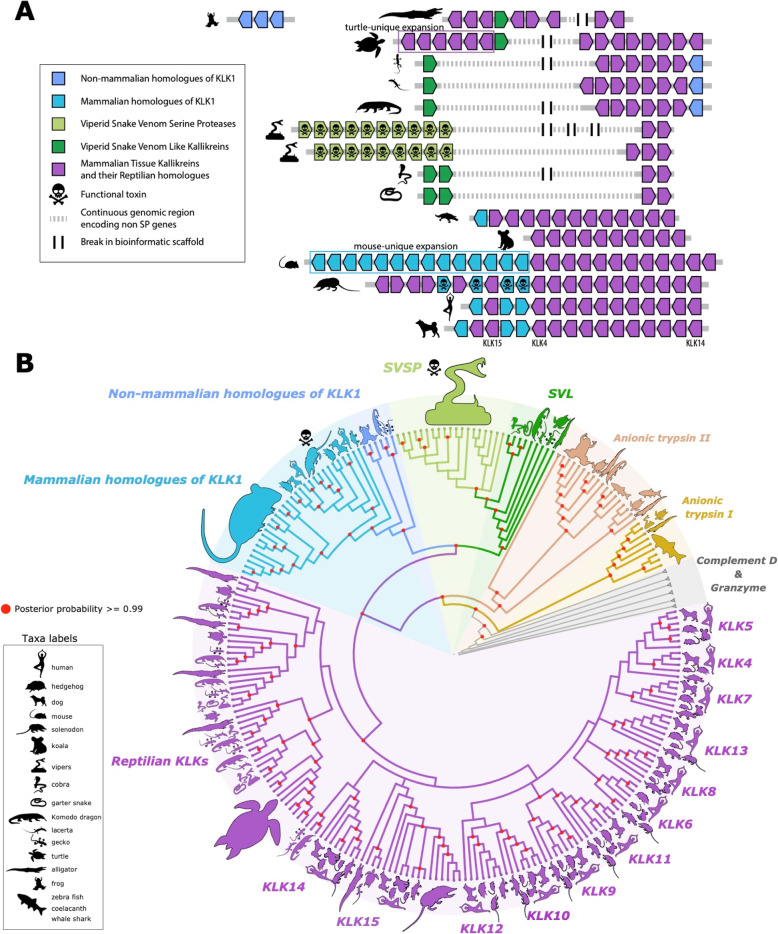Fig. 1.
Origins and diversification of tissue kallikreins (TKL). A TKL genes are located at a single genomic locus. In mammals, TKL genes are found in a single cluster, but in reptiles, they are scattered across two to three nearby clusters located several hundred kilobases apart. Venom evolution is associated with expansions of toxin-containing gene clusters, but there are also lineage-specific expansions that are not linked to venom evolution (e.g. turtles and mice). In existing genomic assemblies, the TKL clusters are often fragmented (represented by dashed line) across different scaffolds, but they share many common genes and are clearly contiguous (Supplementary Figure 1 and 2). B Phylogenetic analysis revealed that tetrapod TKLs originated from a common ancestor with vertebrate anionic trypsins, which are commonly expressed in the pancreas and are found elsewhere in the genome. TKLs diverged into two distinct clades, one comprising the KLK4-KLK15 lineages and the other the KLK1/2/3-SVSP/SVL lineage that contains toxipotent genes. Species silhouettes represent members of entire clades rather than a strict node to species demarcation. For a more conventional format, please refer to phylogeny (Supplementary Figure 2 and supplementary dataset 1) in supplementary. Serine protease-based toxins are homologs deriving from the same ancestral gene, implying that these toxins originated in parallel venoms in reptiles and mammals

